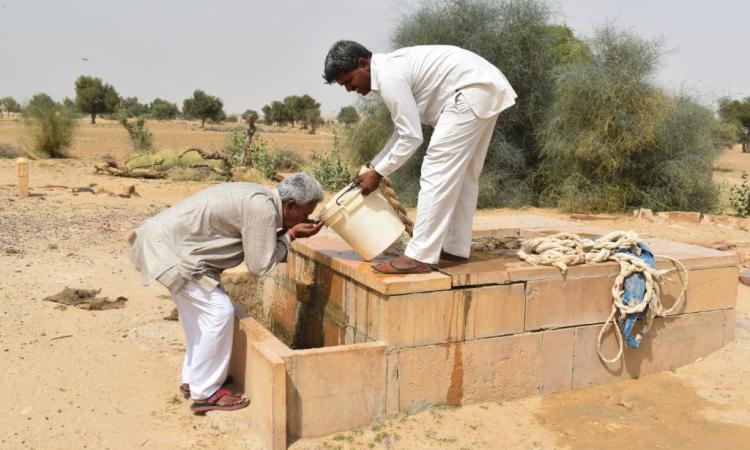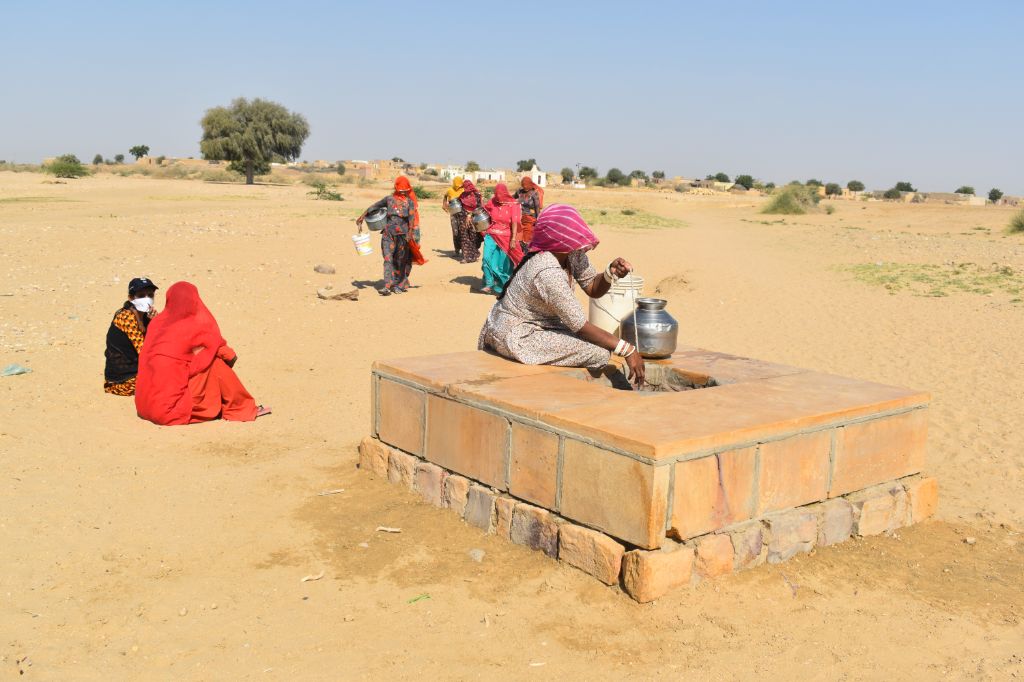
World Water Week is currently being observed across the world. Started in 1991 as the Stockholm Water Symposium, it is celebrated to explore new ways of mitigating the challenges of water scarcity and a different theme is chosen every year with the objective to address global challenges such as poverty, food security, climate crisis, water scarcity and the loss of biodiversity among others.
This year’s theme “Seeing the unseen: The value of water” focuses on three key issues - the value of water for people and development, the economic and financial value of water and the significance of water for nature and climate.
India, which as per a 2019 NITI Aayog report, is suffering from the worst water crisis in its history, has almost 600 million people water-deprived while many cities have probably exhausted their groundwater resources in 2021.
While climate change stares us in the face, the past can be stirred to find solutions for the present and future. India’s desert state Rajasthan, which is also widely known for its different indigenous water harvesting techniques, has a lot to offer in this regard.
History
The different forms of water sources present in its villages today albeit in dilapidated condition were once invented by the past generation using traditional knowledge, precision and skills to meet the water needs of the people in this hot desert region.
Before the advent of technology and modern sources of water supply, the communities here would rely on traditional expertise to identify and build a certain type of rainwater harvesting system as per the specific geological structure of that region.
However, with time and new technology, such traditional water resource systems are on the verge of extinction and so are the related skills and knowledge. One such water resource system is called ‘beri’.
Beris, popularly known as ‘Kui’ in Rajasthan, has been a sustainable traditional source of water. Known as ‘Rejani’ in Jaisalmer, ‘Seje’ in Barmer and ‘Jhaare’ in Aravalis, beris are pitcher-shaped shallow percolation wells that store rainwater. A beri is about half a metre wide at the top and three to four metres wide at the bottom. Beris can hold up to 500,000 litres of water.
Rainwater absorbed by the surface and mountainous rocks flows through the geological routes and gets collected in the areas comprised of sedimentary rocks. This seepage of water is known as ‘Reza’, ‘Seza’, and ‘Jhar’ in the local language, based on which the water source has been named.
Identifying such areas, where potable water can be found requires a great understanding of the region which is usually passed on by the elders to the younger generation.

Sam tehsil’s Siyambar village, which is about 40 km from Jaisalmer, once flaunted more than a hundred beris dotted across its sand dunes.
After the advent of non-traditional, modern sources of water supply, these beris started suffering neglect and due to lack of maintenance, the majority of the beris are now buried in the sand. Currently, only five beris are operational.
"These wells were discovered by our ancestors. By looking at the long strip of green vegetation in between the dessert, they speculated the presence of water and started the process of digging the wells. Their guess turned out to be correct and over time, hundreds of wells were dug,” shared Revant Ram Meghwal, a local from the village
Meghwal notes that even during the intense droughts in the region, these wells provided potable water for two to three years. Despite its great significance in meeting the water requirements of this otherwise parched land, people have stopped using the beris.
“Today, the number of artisans with the talent to construct these wells has decreased significantly. People have also lost interest in maintaining these heritage wells as it requires collective hard work. Looking at the impacts of changing weather cycles due to changing climate, it is about time that government and communities consider reviving these sustainable and environmentally friendly water resources,” he adds.
Rajasthan is not unfamiliar with droughts, and the situation gets worse every year. According to a report, during the last monsoon, which started on June 1, west Rajasthan received only 167.7 mm of rainfall till August 25, against its normal rainfall of 213.5 mm rainfall. Meanwhile, east Rajasthan has received 477.2 mm of rainfall which is its normal rainfall. This deficiency in the rain has triggered the fear of drought even more.
Another report in 2019, stated that approximately 2,000 tube wells have been dug in western Rajasthan and high dependency on groundwater has resulted in its over-exploitation. With the growing scarcity of groundwater and a deficiency in the rain, the beris became both the container for the little rain they received and the second option for water after tube wells. It is important to reemphasise the fact that even during severe droughts, these wells provide potable water.
The construction of these wells calls for intense human labour and mastery. It takes several days to months to reach a minimum depth of 100 feet to a maximum of 300 feet to find water for one well. The most difficult part is digging through the hard layers. Even after a day’s intense hard work, only about one and a half feet of land is excavated.

"The construction of these wells is a unique skill in itself. With the help of villagers, we have renovated hundreds of wells in this area. Preventing the sinking of sand by plastering dry stones simultaneously while digging and breaking down the hard rocks requires not just skills but patience. As the diameter of the well is around two to two-and-a-half feet, the person excavating has to squat to move around. After digging 25-30 feet, the hard layer appears, which is a gruelling task,” explained Chatar Singh Jam, a resident of Ramgarh village in Jaisalmer district, who is engaged in the revival of these wells in the area.
He also informed that quite a few risks are also involved in the digging of a beri like the possibility of soil subsidence. Besides, at this depth, there is a lack of oxygen and the excavation is mostly done in pairs. Well-diggers have to take turns going inside the well to avoid hypoxia. Villagers also participate in the task by helping well-diggers take out the excavated soil. Despite the risks involved, these beris are the answer to the water crisis in the state. With skilled workers and appropriate precautions, these risks can be mitigated.
Chatar agonises that only a handful of artisans are active today who can construct the wells. "The new generation is not interested in learning these skills as they are scared of the hard work it requires and also underestimate its effectiveness to harvest rainwater that holds the answer to the ongoing water crisis. Also, there is a dire need to bring communities together to maintain the existing wells," rued Chatar.

Interestingly, the Beris are named after the person who constructed them. Generations have passed, and the name of these wells remains the same. These beris serve people irrespective of their caste and creed. Even today, the Sode Khan Beri of Kuchhri village in Jaisalmer quenches the thirst of hundreds of people. In addition to humans, water from these beris is available for the animals and livestock as well. The animals outnumber humans in Jaisalmer and during hot summer days, these wells act as life savers for them.
The benefits of these wells are several – it is people-centric, economical, sustainable and environmentally friendly. The supporters of these beris expect the administration to restore and protect the existing structures. By creating awareness among villagers, more such beris should also be constructed to save the water for current and future generations. Maybe this Water Week, a pledge could be taken to save this intellectually built water harvesting system.
The writer is a senior independent journalist from Rajasthan. Share your feedback on features@charkha.org
Charkha Feature
/articles/beris-neglected-indigenous-water-harvesting-system